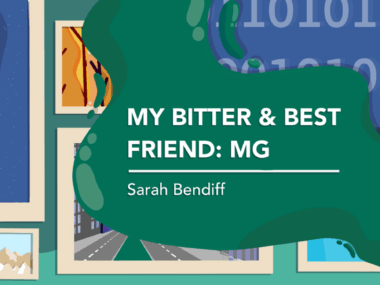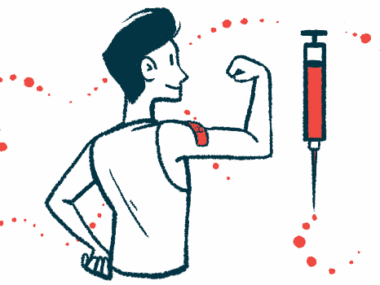Why I need a nap: What living with MG fatigue is really like
The fatigue comes unexpectedly and upends my world
Written by |

For the past three weeks, my struggles with fatigue have greatly affected my life. I think others who, like me, have been diagnosed with myasthenia gravis (MG), as well as those who care for them, understand this experience. One minute life is rolling along and everything seems normal, then — bang! — fatigue instantly becomes overwhelming and all I want to do is sleep.
In my case, fatigue causes an emotional struggle as well. A Myasthenia Gravis News article titled “Energy drain: Coping with myasthenia gravis fatigue” notes that fatigue in MG “is more than simply feeling tired. It’s a deep-seated lack of energy that is physical as well as mental and makes it harder to meaningfully participate in day-to-day life.”
The article also quotes my own characterization of MG fatigue, which I described as “total and complete.” I added that “with ordinary fatigue, one knows that going to bed early, sleeping a little late, these will drive away the fatigue. When I’m experiencing MG fatigue, I don’t even think about it ending. I just want to sleep.”
The give and take
The need and desire to sleep drives away other considerations. I’m unable to care about things like credit card payment due dates or weddings and graduations. I know that as a reasonable adult I ought to attend those things, but overwhelming fatigue draws me back to bed, where sleep comes instantly. It feels so peaceful.
Sometimes I’ll sleep only briefly. I’ll get up, eat something, and sit down at my computer or grab a book. I’m relieved to be back among the living. But hours later, I’ll wake up with a sore neck because I’d fallen asleep while sitting up.
Then there are the disorienting days when I’ll wake up refreshed and relieved that the fatigue has passed. My alarm clock says it’s 6:45 a.m. Finally, I’ll have a full day to accomplish the tasks I’ve put on hold. But then I’ll look out the window and see the evening sun. Confused, I’ll ask Alexa what time it is. “It’s 6:45 p.m.” Another day of failing to accomplish anything.
On those days, I feel like Rip Van Winkle. I think of the time I wasted while sleeping and grow angry. Yet I don’t want to bother my loved ones with my emotions, as most of them are currently traveling. I used to plan on taking those kinds of trips and having similar experiences, too.
One day, as I made my way to the kitchen, I was overcome by a weird sensation. I felt as if I were on the edge of a canyon looking down. I was frightened and shaky. Thoughts ran through my head like will I ever be able to travel again? Has my world irrevocably shrunken to just home, sweet home? Will I ever journey farther than my front door? Has the pool permanently replaced the Pacific?
These questions continue to plague me now that the fatigue has passed and my “normal” life has returned. I don’t know if I’ll ever find the answers I’m looking for, but I’m certain about one thing: The fatigue will return. It’ll come unexpectedly and upend my world once again. The struggle will only end when, as the old church hymn goes, “the roll is called up yonder.”
One positive in all of this is that I won’t allow the fatigue to prevent me from getting the best out of the days when I’m running on all cylinders. In the poem “Andrea del Sarto,” Robert Browning writes that “less is more.” Ludwig Mies van der Rohe applied this idea to his designs and created architectural masterpieces.
Van der Rohe’s works can inspire those of us who live with rare diseases. Our lives may be shortened. The luxury of time may never be ours. Even so, we can make our lives into masterpieces.
I need to think further about fatigue and MG. Right now, I need a nap.
Note: Myasthenia Gravis News is strictly a news and information website about the disease. It does not provide medical advice, diagnosis, or treatment. This content is not intended to be a substitute for professional medical advice, diagnosis, or treatment. Always seek the advice of your physician or other qualified health provider with any questions you may have regarding a medical condition. Never disregard professional medical advice or delay in seeking it because of something you have read on this website. The opinions expressed in this column are not those of Myasthenia Gravis News or its parent company, Bionews, and are intended to spark discussion about issues pertaining to myasthenia gravis.







Stephen Wright
Yes, can truly recognise all of what you said, I can drop to sleep at a clock of a finger, two to three times a day, it's my body saying STOP, you need to recharge. I can do very little before fatigue grabs a hold of me, it's no good fighting it either, never argue with your body, you never win. Great piece from you, and I'm sure thousands agree.
Mr Giles coultas
I've just read this article and is so spot on I've had mg for over 4 years I don't like it because it makes me like hot tempered and I just can't handle it my wife has to watch the mood swings daily so I go out on my mobility scooter
Randy M Knabel
I agree, this article is spot on..........I've been dealing with my MG diagnosis for about 3 years now...........the MOST significant side effect I've come across is these almost instantaneous impulses to fall asleep............one minute you're flying along pretty well thinking this is great and in the blink of an eye you become so tired it's almost impossible to not close your eyes for a nap..........fortunately my "naps" aren't too prolonged but the intenseness of the feeling to close your eyes is what is surprising.